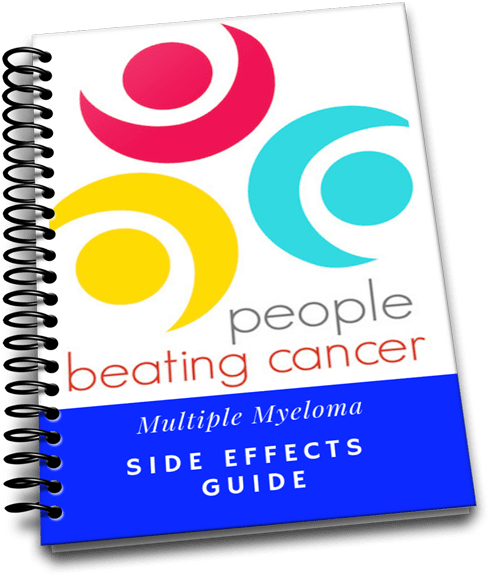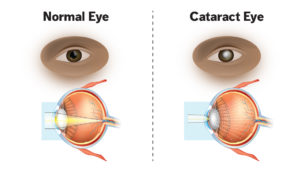
Recently Diagnosed or Relapsed? Stop Looking For a Miracle Cure, and Use Evidence-Based Therapies To Enhance Your Treatment and Prolong Your Remission
Multiple Myeloma an incurable disease, but I have spent the last 25 years in remission using a blend of conventional oncology and evidence-based nutrition, supplementation, and lifestyle therapies from peer-reviewed studies that your oncologist probably hasn't told you about.
Click the orange button to the right to learn more about what you can start doing today.
- You are here:
- Home »
- Blog »
- Multiple Myeloma »
- Multiple Myeloma Treatments- Dexamethasone = Cataracts- Surgery, Eye Drops
Multiple Myeloma Treatments- Dexamethasone = Cataracts- Surgery, Eye Drops

People with multifocal lenses (after cataract surgery) may have more vision problems such as glare and seeing haloes.
I underwent the usual multiple myeloma treatments post a MM diagnosis in 2/94. A constant therapy however, was dexamethasone aka high-dose steroids. A common side effect from high-dose steroid use is cataracts.
I have to say that of all the short, long-term and late stage side effects that I encountered from my treatment of an incurable blood cancer, cataracts (CT) was the easiest to live with. However, each and every patient is different and the devil is in the details, as they day.
If you have been diagnosed with multiple myeloma and you are considering chemotherapy, any chemotherapy, assume that you will develop cataracts. I say this because side effects are much easier to manage, even prevent, if the patient plans ahead.
The top article linked below describes my personal experience accurately. I developed cataracts in both eyes and have multifocal lenses. In short, multifocal lenses are more convenient yet cause more visual problems. New and improved multifocal lenses have been developed since my surgery and there may well be improved lenses for you to discuss with your doctor.
If I read this blog post before my chemotherapy treatments long ago, and if the eye drop therapy discussed below was available, I would certainly try to prevent my cataracts from even forming. Or taking longer to form.
Lastly, according to the last study linked below, antioxidant supplements have been cited in cataract prevention. Considering the many evidence-based, antioxidant supplements that also are show to be an anti-MM therapy, I would supplement as well.
Have you been diagnosed with multiple myeloma? To learn more about cataract prevention and treatment, scroll down the page, post a question or comment and I will reply to you ASAP.
Thank you,
David Emerson
- MM Survivor
- MM Coach
- Director PeopleBeatingCancer
Recommended Reading:
- Cataract Surgery-Questions You Should Ask-
- Multiple Myeloma Therapies- Why Chemotherapy May Not Work for African Americans-
- Multiple Myeloma Diagnosis-A Second Opinion from a MM Survivor
Multifocal versus monofocal intraocular lenses for people having cataract surgery
“The aim of this Cochrane Review was to assess the effects of multifocal compared with monofocal intraocular lenses after cataract extraction…
The review shows that people who have a multifocal intraocular lens after their cataract is removed may be less likely to need additional spectacles. However, they may experience more visual problems, such as glare or haloes (rings around lights), compared with people who have monofocal lenses…
Usually the replacement lens has one ‘point of focus’. This means that a person’s vision after cataract surgery is either good for distance vision (driving, watching television) or good for near vision (reading, sewing) but not good for both. This standard lens is known as a ‘monofocal’ lens. People who get a monofocal lens will need to use spectacles for either distance or, more usually, for near vision.
To address this problem, new lenses have been developed that provide two or more points of focus. These are known as ‘multifocal’ lenses. These are designed to reduce the need for spectacles. People with multifocal lenses may have more vision problems such as glare and seeing haloes.
Another option is to put a different monofocal lens in each eye: one with a focus for near vision and one with a focus for distance vision. This is known as ‘monovision’…
N-acetylcarnosine (NAC) drops for age-related cataracts
“The aim of this Cochrane Review was to find out if NAC eye drops can prevent or reverse the progression of cataracts (cloudy lens in the eye).
Key messages
It is uncertain whether NAC eye drops prevent, or reverse, the progression of cataracts…”
Eye Drops for Cataracts
“Scientists in California are investigating a naturally occurring steroid called lanosterol that could be used one day to treat cataracts. It may be possible one day to simply use lanosterol in the form of a topical eye drop to reduce cataract development…
Lanosterol was able to significantly shrink the size of the cataracts and improve lens transparency. Scientists caution that more research is needed before deeming the drops a reliable and viable treatment for cataracts in humans…
A Word From VeryWell
Treating cataracts with eyedrops instead of undergoing cataract surgery is certainly a possibility for the future. Scientists are working hard to prove the benefits of using lanosterol as a non-invasive alternative to cataract surgery. Reducing cataract develop with steroid eye drops may soon be a treatment for moderate cataracts.”
Nutrition and Cataracts
What Is Nutrition’s Link to Cataracts?
Several research studies show that the antioxidant properties of vitamins C and E may protect against the development and progression of CTs. Early evidence also suggests that the carotenoids lutein (pronounced loo-teen) and zeaxanthin (pronounced zee-uh-zan-thin), which are also antioxidants, may also help protect against CTs…
What You Need to Know
Given the positive association between nutrition and CT, it’s probably a good idea to increase the amount of certain antioxidants in your daily diet…
…In the studies mentioned here, the consumption levels associated with CT benefits were considerably higher than the current average intake. If you find it difficult to increase the level of these antioxidants and carotenoids in your diet, consider taking multivitamin/mineral and eye health supplements containing these nutrients…”


